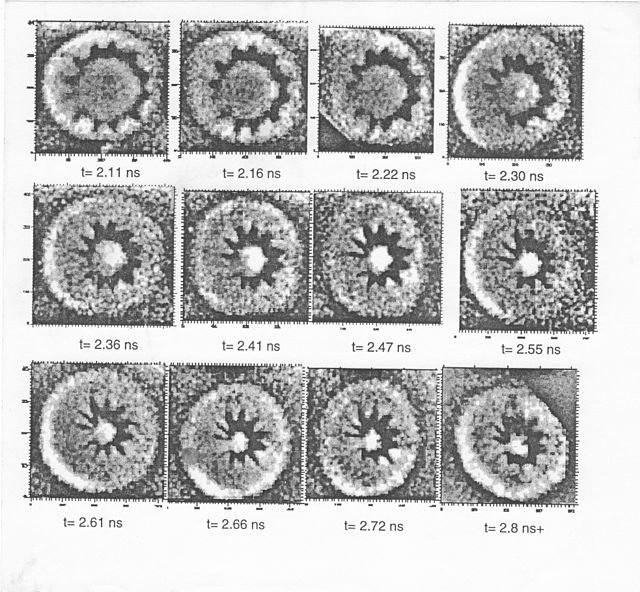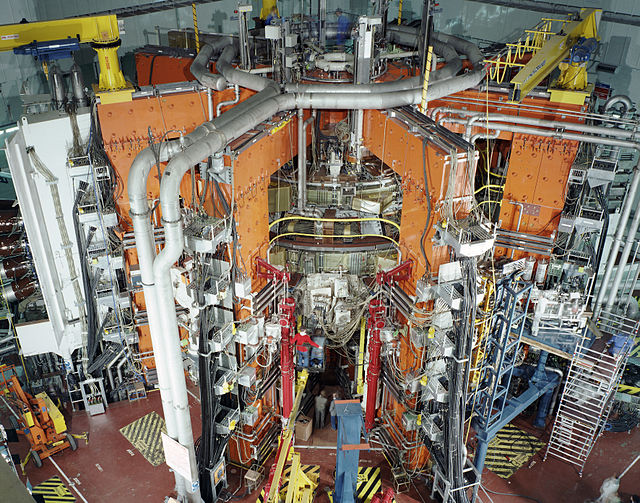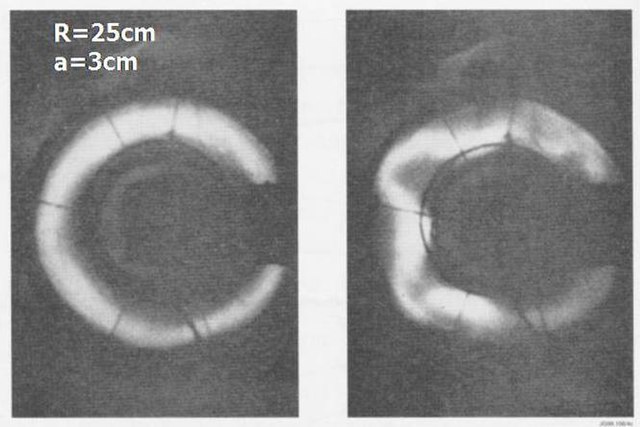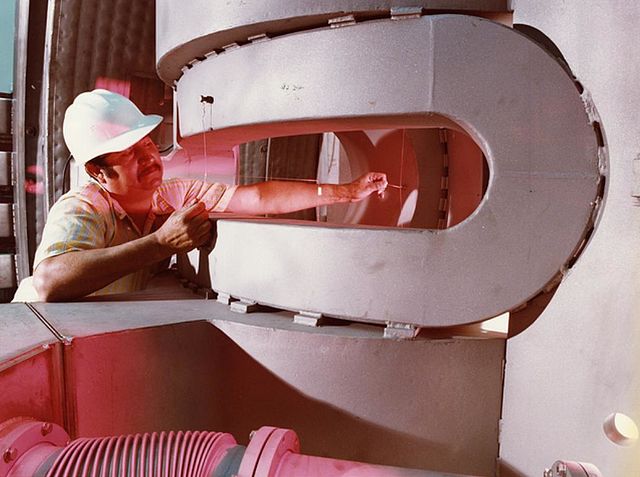Inertial confinement fusion
Inertial confinement fusion (ICF) is a fusion energy process that initiates nuclear fusion reactions by compressing and heating targets filled with fuel. The targets are small pellets, typically containing deuterium (2H) and tritium (3H).
Inertial confinement fusion using lasers rapidly progressed in the late 1970s and early 1980s from being able to deliver only a few joules of laser energy (per pulse) to being able to deliver tens of kilojoules to a target. At this point, very large scientific devices were needed for experimentation. Here, a view of the 10 beam LLNL Nova laser, shown shortly after the laser's completion in 1984. Around the time of the construction of its predecessor, the
Indirect drive laser ICF uses a hohlraum which is irradiated with laser beam cones from either side on its inner surface to bathe a fusion microcapsule inside with smooth high intensity X-rays. The highest energy X-rays can be seen leaking through the hohlraum, represented here in orange/red.
Mockup of a gold plated National Ignition Facility (NIF) hohlraum
An Inertial confinement fusion target, which was a foam filled cylindrical target with machined perturbations, being compressed by the Nova Laser. This shot was done in 1995. The image shows the compression of the target, as well as the growth of the Rayleigh-Taylor instabilities.
Fusion power is a proposed form of power generation that would generate electricity by using heat from nuclear fusion reactions. In a fusion process, two lighter atomic nuclei combine to form a heavier nucleus, while releasing energy. Devices designed to harness this energy are known as fusion reactors. Research into fusion reactors began in the 1940s, but as of 2024, no device has reached net power, although net positive reactions have been achieved.
The Joint European Torus (JET) magnetic fusion experiment in 1991
Early photo of plasma inside a pinch machine (Imperial College 1950–1951)
The UK claimed that it had gotten fusion first in 1957 on ZETA, but this claim had to later be withdrawn.
Magnetic mirrors suffered from end losses, requiring high power, complex magnetic designs, such as the baseball coil pictured here.








